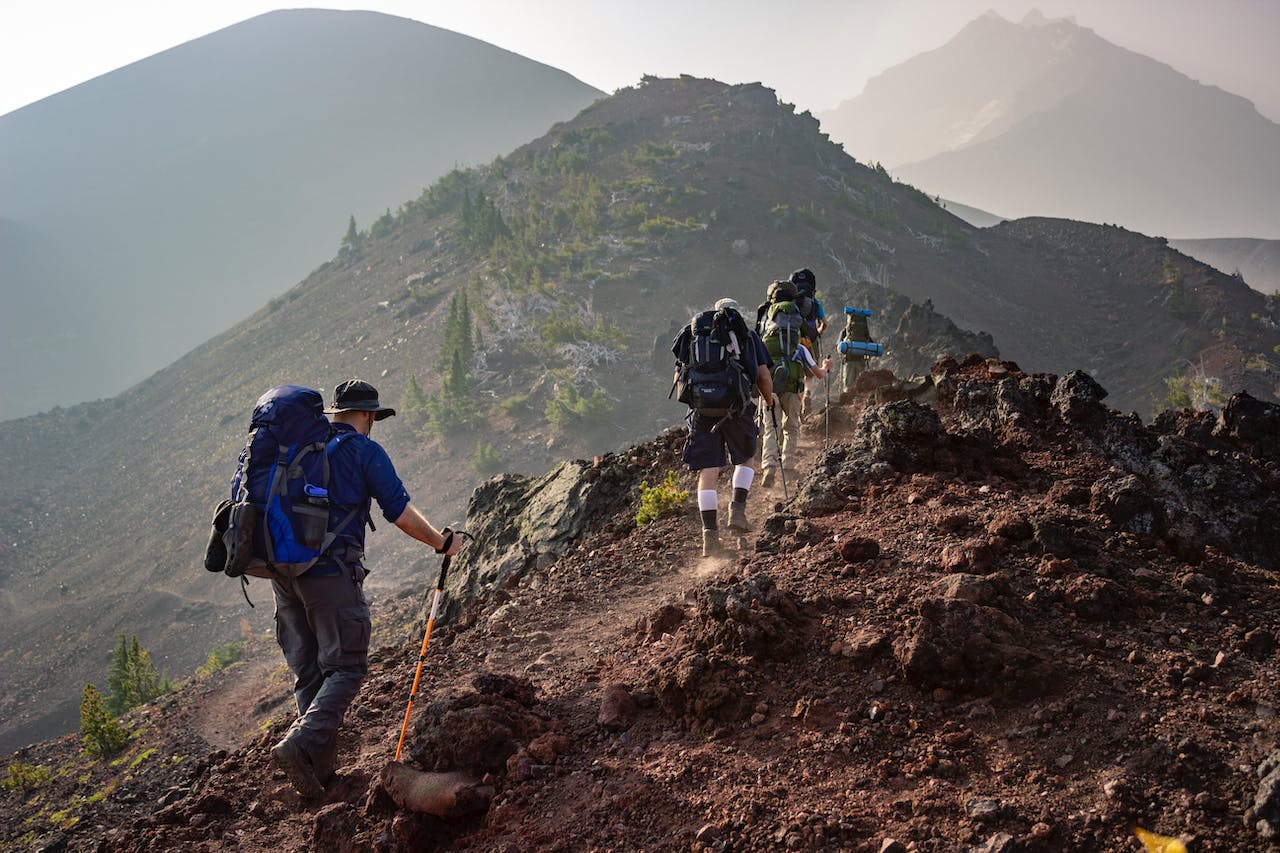When gearing up for a hiking expedition to the world’s most magnificent destinations, having the right equipment is paramount. Whether you’re a seasoned hiker or just starting, the right gear can enhance your experience and ensure safety on the trail. In this comprehensive guide, we’ll walk you through the essential hiking gear to pack for your ultimate adventure in some of the world’s most breathtaking destinations.
Comfortable and Supportive Footwear: Your Foundation on the Trail
Your choice of footwear can make or break your hiking experience. Invest in high-quality, comfortable, and supportive hiking boots or shoes that suit the terrain of your chosen destination. Look for waterproof and breathable options to keep your feet dry and prevent blisters, especially in wet or varied conditions. Properly fitted footwear provides stability and reduces the risk of injuries on challenging trails.
Technical Clothing: Stay Dry, Cool, and Protected
Selecting the right clothing is crucial for a comfortable and safe hike. Opt for moisture-wicking, quick-drying fabrics to keep sweat at bay and prevent chafing. Dress in layers to adapt to changing weather conditions, and consider convertible pants for versatility. A waterproof and windproof jacket is essential for protection against the elements, while a wide-brimmed hat or a cap shields you from the sun. Don’t forget UV-protective sunglasses to safeguard your eyes.
Backpack: Carry Your Essentials with Ease
Choosing the right backpack is crucial for carrying all your hiking essentials comfortably. Consider the duration of your hike when selecting the size of your backpack. A daypack is suitable for shorter hikes, while longer expeditions may require a larger backpack with multiple compartments. Look for a pack with padded shoulder straps and a hip belt for proper weight distribution. Ensure your backpack is made from durable, water-resistant material to protect your gear from the elements.
Navigation Tools: Find Your Way with Confidence
Navigating through unfamiliar terrain requires reliable tools. A detailed topographic map of your hiking destination and a compass are essential for route planning and orientation. Additionally, consider a GPS device or a smartphone with a reliable navigation app and offline maps. Familiarize yourself with the trail before starting, and carry a guidebook or trail markers for additional guidance.
Hydration System: Stay Refreshed on the Trail
Staying hydrated is crucial during any hike, especially in remote destinations. Carry a durable water bottle or hydration reservoir with a sufficient capacity for your trek. Invest in a water purification system if you’re hiking in areas with uncertain water sources. This ensures you can replenish your water supply safely and stay hydrated throughout your adventure.
Nutrition: Fuel Your Body for Peak Performance
Pack a variety of nutritious snacks and energy-boosting foods to keep your energy levels up during the hike. Consider lightweight, high-energy options such as trail mix, energy bars, and dried fruits. Calculate your calorie needs based on the duration and intensity of your hike, and always carry a bit more than you anticipate to account for unexpected delays.
First Aid Kit: Be Prepared for Emergencies
A well-equipped first aid kit is a non-negotiable item for any hiker. Include essentials such as bandages, antiseptic wipes, blister treatment, pain relievers, and any personal medications you may need. Familiarize yourself with basic first aid procedures, and carry an emergency whistle and a space blanket for added safety. Tailor your first aid kit to your specific needs and the challenges of your chosen hiking destination.
Shelter: Prepare for Unforeseen Circumstances
While most day hikers may not need a full shelter, having a lightweight emergency shelter or bivy is essential for longer or more remote treks. It provides protection in case of unexpected weather changes or if you find yourself stranded. Even a compact, durable emergency space blanket can serve as a temporary shelter in emergencies.
Illumination: Light Up the Trail After Dark
If your hike extends into the evening, a reliable illumination source is crucial. Pack a durable headlamp or flashlight with extra batteries to navigate trails in low-light conditions. This not only enhances your safety but also allows you to appreciate the nocturnal beauty of your surroundings.
Multi-Tool or Knife: Versatility in Your Pocket
A multi-tool or a sturdy knife is a versatile and essential piece of gear for any hiker. It can be used for various tasks, from cutting twine to preparing food. Choose a compact and lightweight option that includes essential features like a blade, scissors, and screwdrivers.
Emergency Communication: Stay Connected in Remote Areas
When venturing into remote areas, having a reliable means of communication is crucial. Consider carrying a fully charged mobile phone, a satellite communicator, or a personal locator beacon (PLB). These devices can be invaluable in emergencies, allowing you to call for help or alert rescue services if needed.
Sun Protection: Shield Yourself from Harmful Rays
Protecting yourself from the sun’s harmful rays is essential on the trail. Pack a high SPF sunscreen and lip balm, and reapply them regularly. Sunglasses with UV protection shield your eyes, and a wide-brimmed hat or cap provides additional shade. Sun protection is especially critical in higher altitudes and sunny environments.
Insect Repellent: Ward Off Unwanted Guests
Insect repellent is a must when hiking in areas with prevalent bugs and mosquitoes. Choose a DEET or picaridin-based repellent for effective protection. Consider packing a head net for added defense against persistent insects, ensuring a more enjoyable hiking experience.




